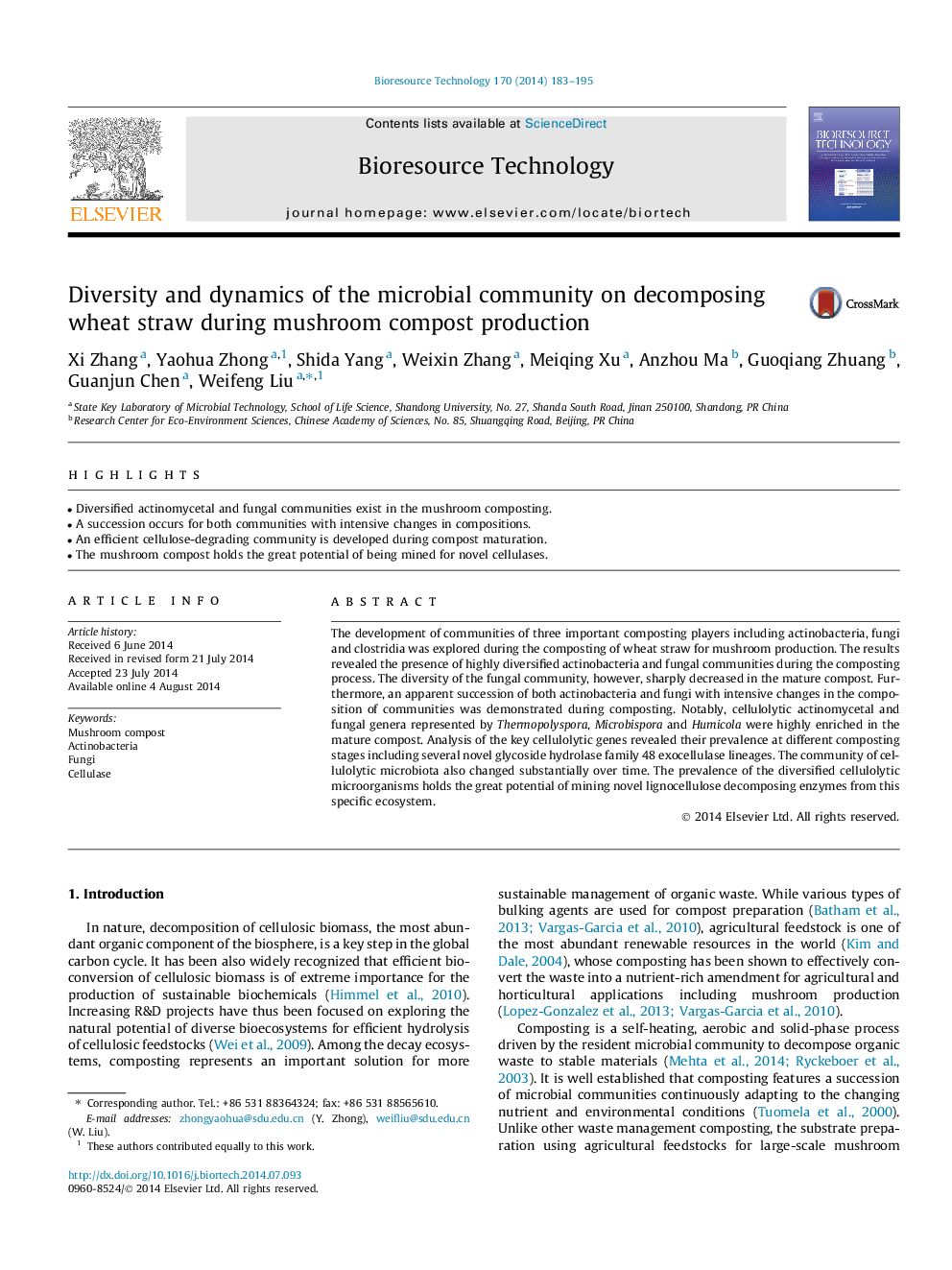| Article ID | Journal | Published Year | Pages | File Type |
|---|---|---|---|---|
| 680448 | Bioresource Technology | 2014 | 13 Pages |
Abstract
The development of communities of three important composting players including actinobacteria, fungi and clostridia was explored during the composting of wheat straw for mushroom production. The results revealed the presence of highly diversified actinobacteria and fungal communities during the composting process. The diversity of the fungal community, however, sharply decreased in the mature compost. Furthermore, an apparent succession of both actinobacteria and fungi with intensive changes in the composition of communities was demonstrated during composting. Notably, cellulolytic actinomycetal and fungal genera represented by Thermopolyspora, Microbispora and Humicola were highly enriched in the mature compost. Analysis of the key cellulolytic genes revealed their prevalence at different composting stages including several novel glycoside hydrolase family 48 exocellulase lineages. The community of cellulolytic microbiota also changed substantially over time. The prevalence of the diversified cellulolytic microorganisms holds the great potential of mining novel lignocellulose decomposing enzymes from this specific ecosystem.
Related Topics
Physical Sciences and Engineering
Chemical Engineering
Process Chemistry and Technology
Authors
Xi Zhang, Yaohua Zhong, Shida Yang, Weixin Zhang, Meiqing Xu, Anzhou Ma, Guoqiang Zhuang, Guanjun Chen, Weifeng Liu,
